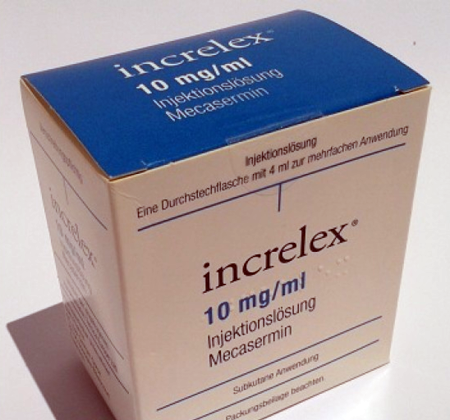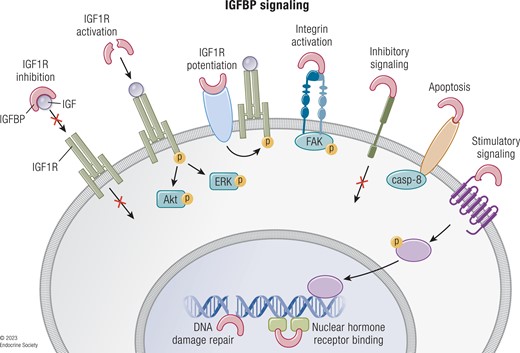enchanted_elixir

Forum Legend
Contributor
- Joined
- Apr 15, 2022
- Posts
- 22,334
- Reputation
- 37,556
Here's what I'll say, after researching this.
IGF-1 DES barely binds to all IGFBPs (these proteins tell IGF-1 in the blood where to go, regulate bioavailability and half life), so it'll just immediately attach to IGF-1 receptors near the injection site and not really go anywhere else.
IGF-1 LR3 doesn't really bind well to certain IGFBPs like IGFBP-3, so it basically won't really be transported to growth plates or other sources of long bone cartilage.
Receptor Grade IGF-1 LR3 is basically a more pure and slightly enhanced IGF-1 LR3, but since it's LR3, it can't really bind to certain IGFBPs like IGFBP-3.
My verdict, as far as my current knowledge goes:
I think endogenous IGF-1 is for the win here since it's responsive to every IGFBPs.
Explained simply: First explanation
Imagine IGF-1 is like a delivery package, and IGFBPs are GPS devices attached to it. These GPS devices tell the package where to go in the body.
Remember:
Explained simply: Second explanation
Imagine IGF-1 as a delivery truck:
Explained simply: Third explanation
Imagine your body is a bustling city, and IGF-1 is a delivery driver carrying essential packages for growth and repair.
But some IGF-1 variants are a bit rebellious:
My Final Sayings:
If we could find injectable raw IGF-1 (not the variants) or a variant specifically and/or only responsive to IGFBPs that help with height (ex. IGFBP-3), that'd be great.
Besides that, it's blast HGH (or some other GH agonist), get all of our micronutrients, and consume an insane amount of animal protein (eggs, meat, milk, dairy, etc.) to maximize endogenous IGF-1.
Protip: Vitamin D helps increase IGFBP-3.
IGF-1 DES barely binds to all IGFBPs (these proteins tell IGF-1 in the blood where to go, regulate bioavailability and half life), so it'll just immediately attach to IGF-1 receptors near the injection site and not really go anywhere else.
IGF-1 LR3 doesn't really bind well to certain IGFBPs like IGFBP-3, so it basically won't really be transported to growth plates or other sources of long bone cartilage.
Receptor Grade IGF-1 LR3 is basically a more pure and slightly enhanced IGF-1 LR3, but since it's LR3, it can't really bind to certain IGFBPs like IGFBP-3.
My verdict, as far as my current knowledge goes:
- DES is only good if you can actually inject it directly on your growth plates in each leg. Good luck at not causing uneven growth or injecting in sore spots everyday.
- LR3 is not as effective because it won't really be transported to growth plates. The IGFBPs it does respond to makes it more conducive to muscle growth than chondrogenesis it seems.
I think endogenous IGF-1 is for the win here since it's responsive to every IGFBPs.
Explained simply: First explanation
Imagine IGF-1 is like a delivery package, and IGFBPs are GPS devices attached to it. These GPS devices tell the package where to go in the body.
- DES is like a faulty GPS: It barely works, so the package just sticks to the first stop (injection site) and doesn't reach other important locations like growth plates. This can lead to uneven or localized growth, like one leg growing faster than the other.
- LR3 is like a GPS with some missing maps: It can't find certain places like growth plates because those maps are missing (weak binding to IGFBP-3). So, it mostly goes to different destinations like muscles, which might make you stronger but not necessarily taller.
- Receptor Grade LR3 is like an upgraded LR3: It's a bit cleaner and faster, but still has the same missing maps problem.
- Endogenous IGF-1 is like a perfect GPS: It has all the maps and can reach all the important places, including growth plates, muscles, and other organs. This is why it's the best natural option for healthy growth.
Remember:
- Messing with these GPS devices (using IGF-1 variants) can be risky and unpredictable. It's like tinkering with your phone's GPS - you might end up lost or in the wrong place!
- The safest and most effective way to grow is to let your body do its own thing naturally, with good exercise, healthy eating, and enough sleep. This helps your body make its own perfect GPS (IGF-1) for optimal growth.
Explained simply: Second explanation
Imagine IGF-1 as a delivery truck:
- It carries important molecules (like growth signals) to different parts of the body.
- IGFBPs are like traffic lights: They tell the truck where to go and how long to stay.
- Receptors are like buildings: When the truck reaches the right building, it delivers its cargo (growth signals) to help it grow.
- DES: This truck has a busted GPS! It can't read the traffic lights (IGFBPs) well, so it just stops at the first building it sees (closest receptor). That's not good for bone growth, because it only delivers signals near the injection site, not to those far-away growth plates in your legs.
- LR3: This truck has a slightly better GPS, but it still can't read some traffic lights (like IGFBP-3). So, it gets stuck in the muscle building area (other receptors) and doesn't reach the growth plate buildings as well as it should.
- Receptor Grade LR3: This is like a fancy upgrade of the LR3 truck. It's cleaner and more efficient, but it still has the same problem with the GPS. It might be a bit better than regular LR3, but it still won't reach the growth plates as effectively as...
- Endogenous IGF-1: This is the original, well-maintained truck! It has a perfect GPS and can read all the traffic lights (IGFBPs) perfectly. It delivers its cargo (growth signals) exactly where they need to go, including those important growth plate buildings in your legs.
- DES: Bad idea. It's like trying to navigate a new city without a map – you'll end up lost and in the wrong place. Only worth it of you can inject directly in your growth plates.
- LR3: Not ideal. It'll prefer to help with other things like muscle growth than height. It will increase IGF-1 in for height, but most of its energy will go to other things like muscle growth, etc.
- Receptor Grade LR3: Slightly better than LR3, but still not the best option. Same problems as LR3.
- Endogenous IGF-1: The clear winner! It's safe, effective, and delivers the growth signals exactly where your body needs them.
Explained simply: Third explanation
Imagine your body is a bustling city, and IGF-1 is a delivery driver carrying essential packages for growth and repair.
- IGFBPs are the traffic cops patrolling the city: Their job is to direct IGF-1 drivers to the right destinations, ensuring that growth happens in a controlled and balanced way.
- Regular IGF-1 is a law-abiding driver: It follows the cops' instructions, patiently waiting at red lights and taking the designated routes to reach important growth areas like bones and muscles.
But some IGF-1 variants are a bit rebellious:
- DES is like a reckless driver: It speeds through red lights and ignores traffic cops, causing chaos and delivering all it's packages at the first place (or places) it lands. This can lead to uneven growth and unwanted effects in random areas.
- LR3 is like a driver with a fake GPS: It has a faulty GPS that tends to dislike certain checkpoints (like growth plates) because it evades certain IGFBPs like IGFBP-3. This means it often ends up delivering most of it's packages (IGF-1) to other places instead, focusing more on strength than height. It sometimes delivers IGF-1 to growth plates but much less than the heightmaxer wants.
My Final Sayings:
If we could find injectable raw IGF-1 (not the variants) or a variant specifically and/or only responsive to IGFBPs that help with height (ex. IGFBP-3), that'd be great.
Besides that, it's blast HGH (or some other GH agonist), get all of our micronutrients, and consume an insane amount of animal protein (eggs, meat, milk, dairy, etc.) to maximize endogenous IGF-1.
Protip: Vitamin D helps increase IGFBP-3.
Last edited:






